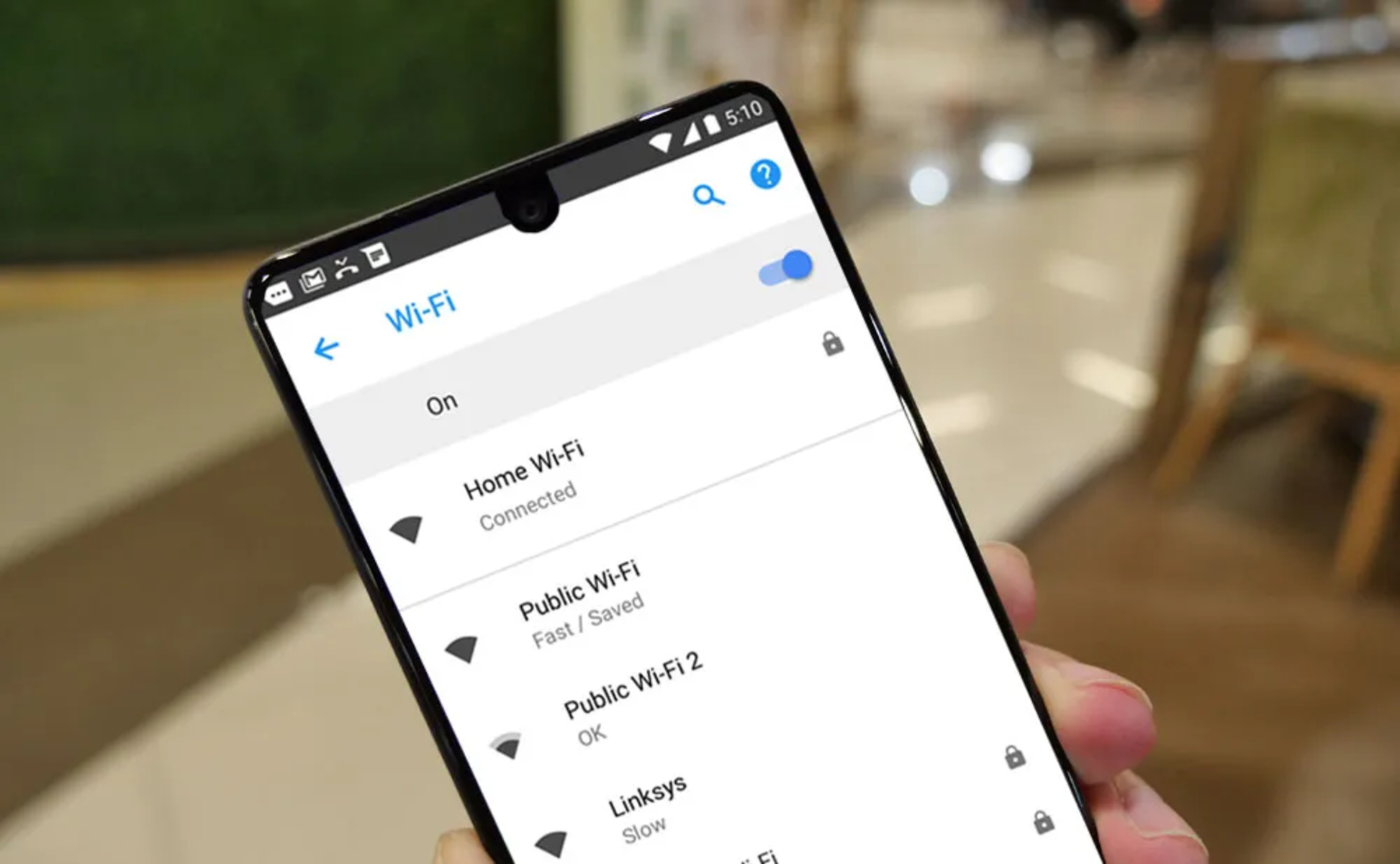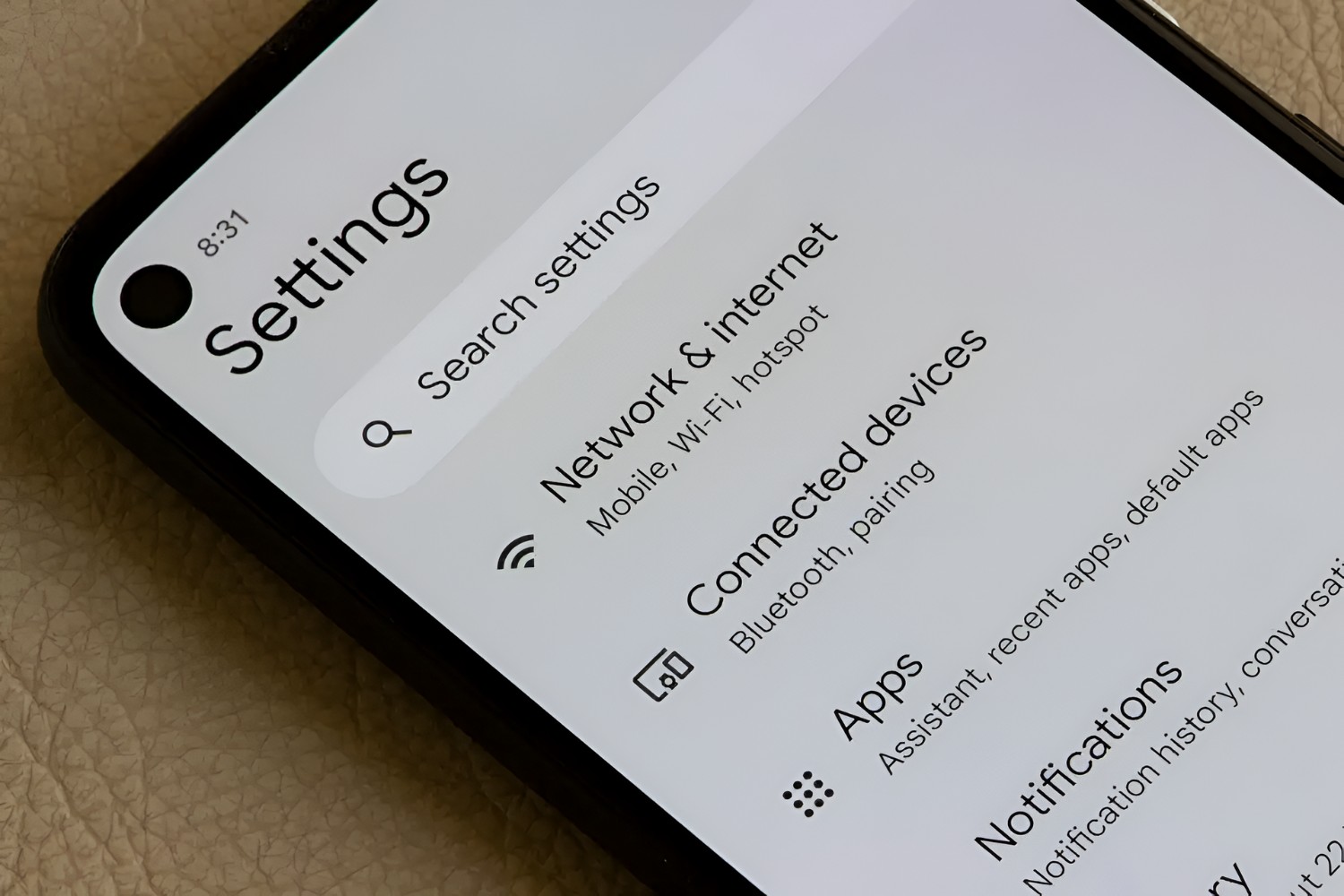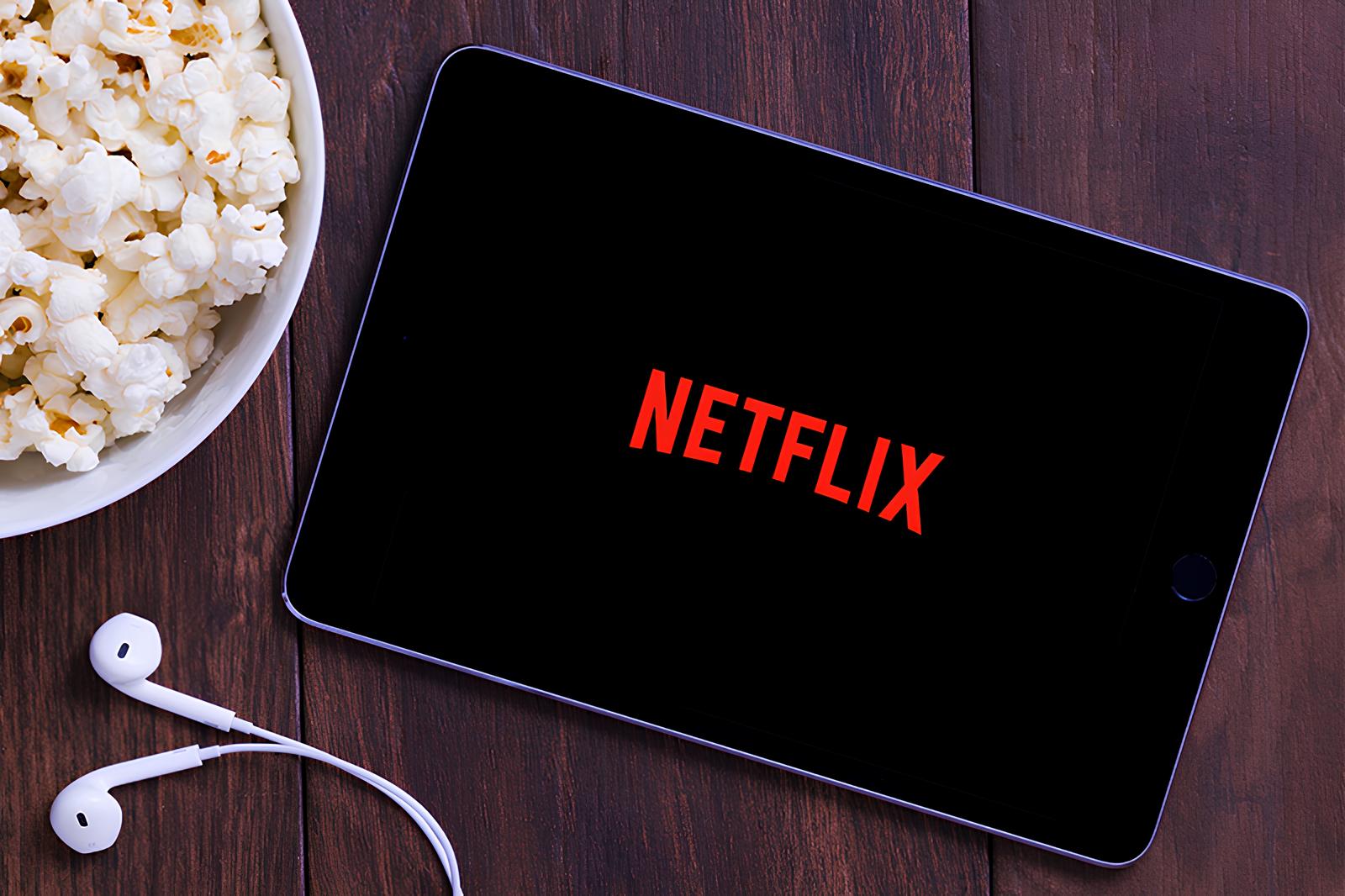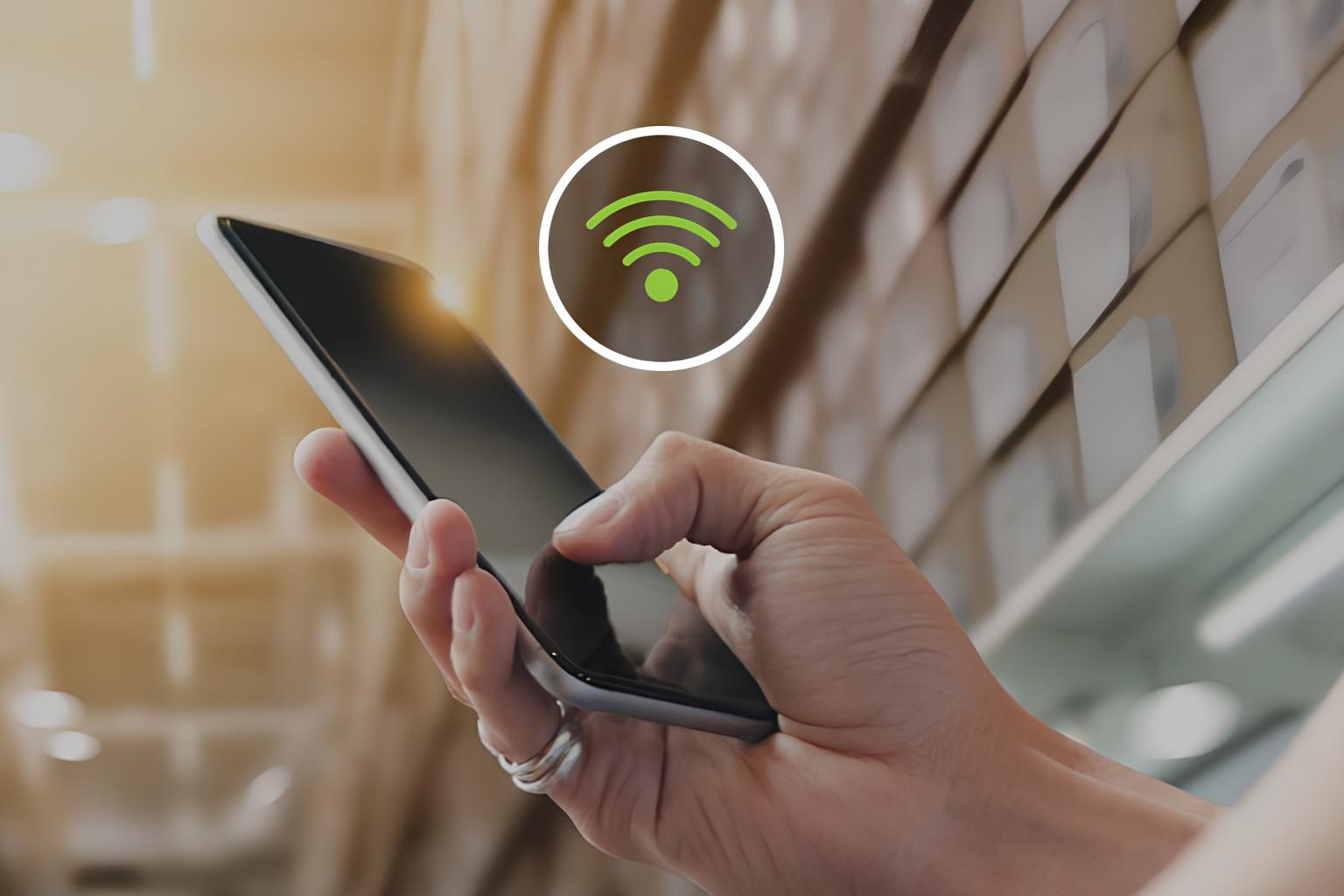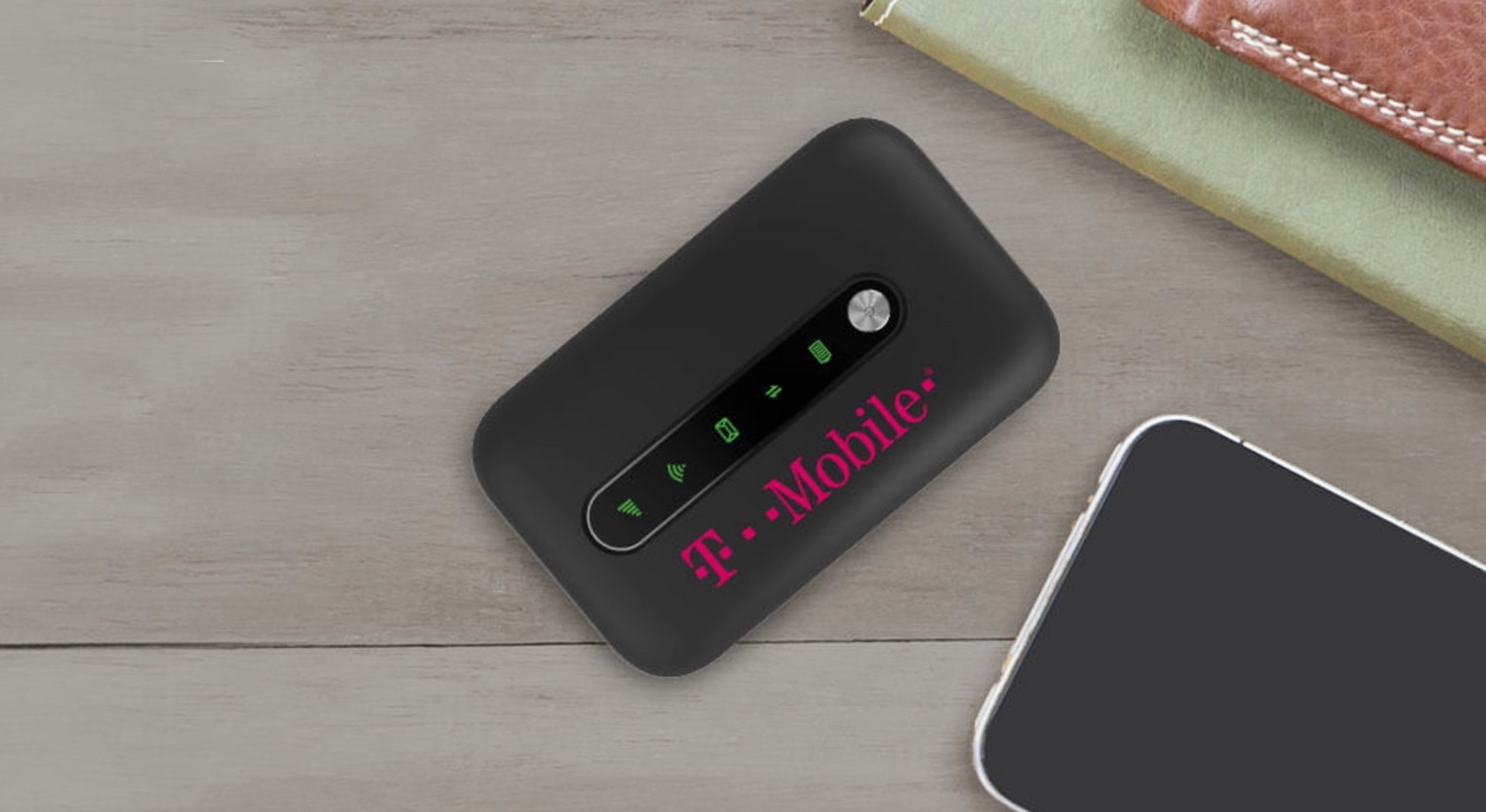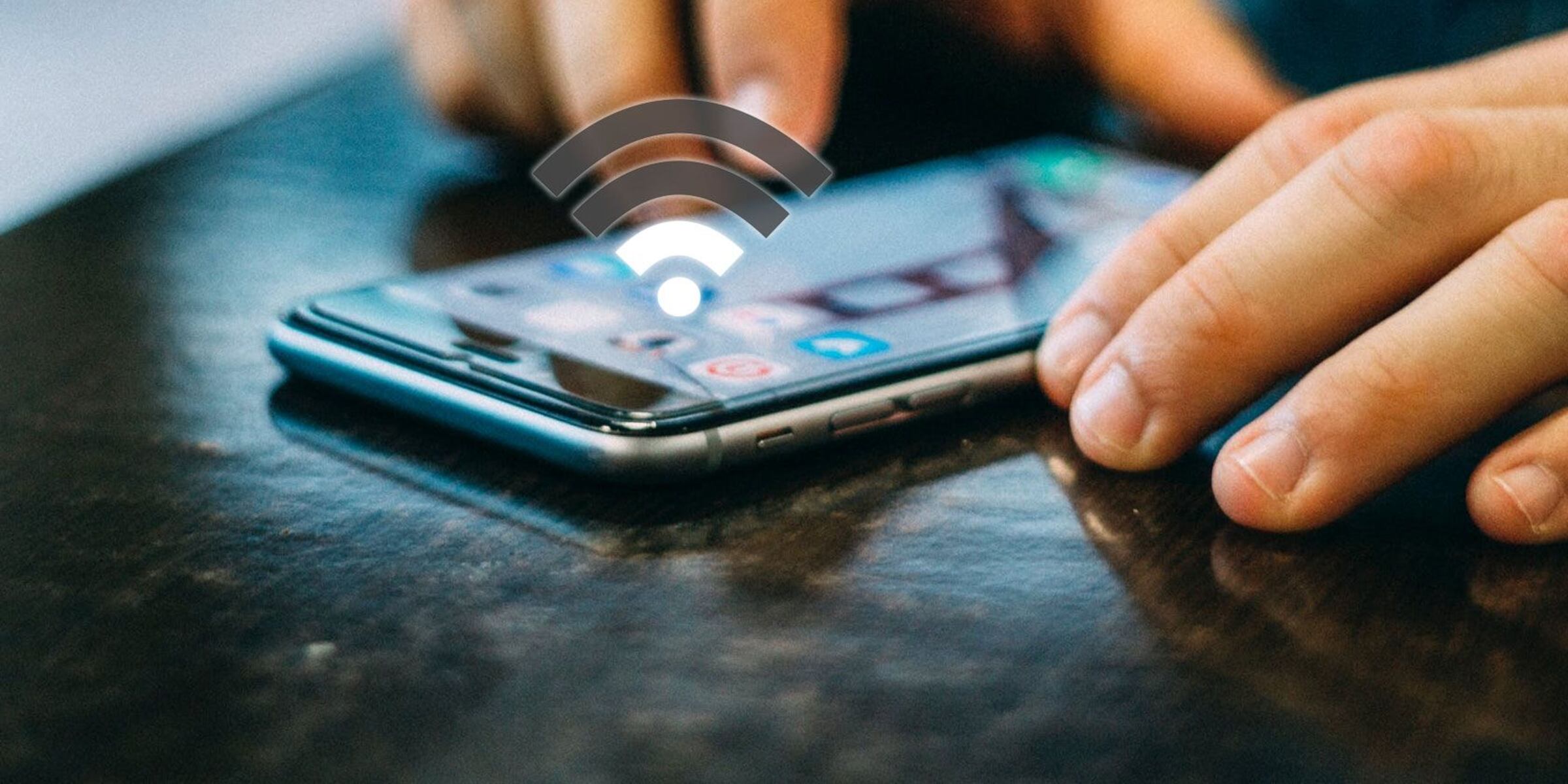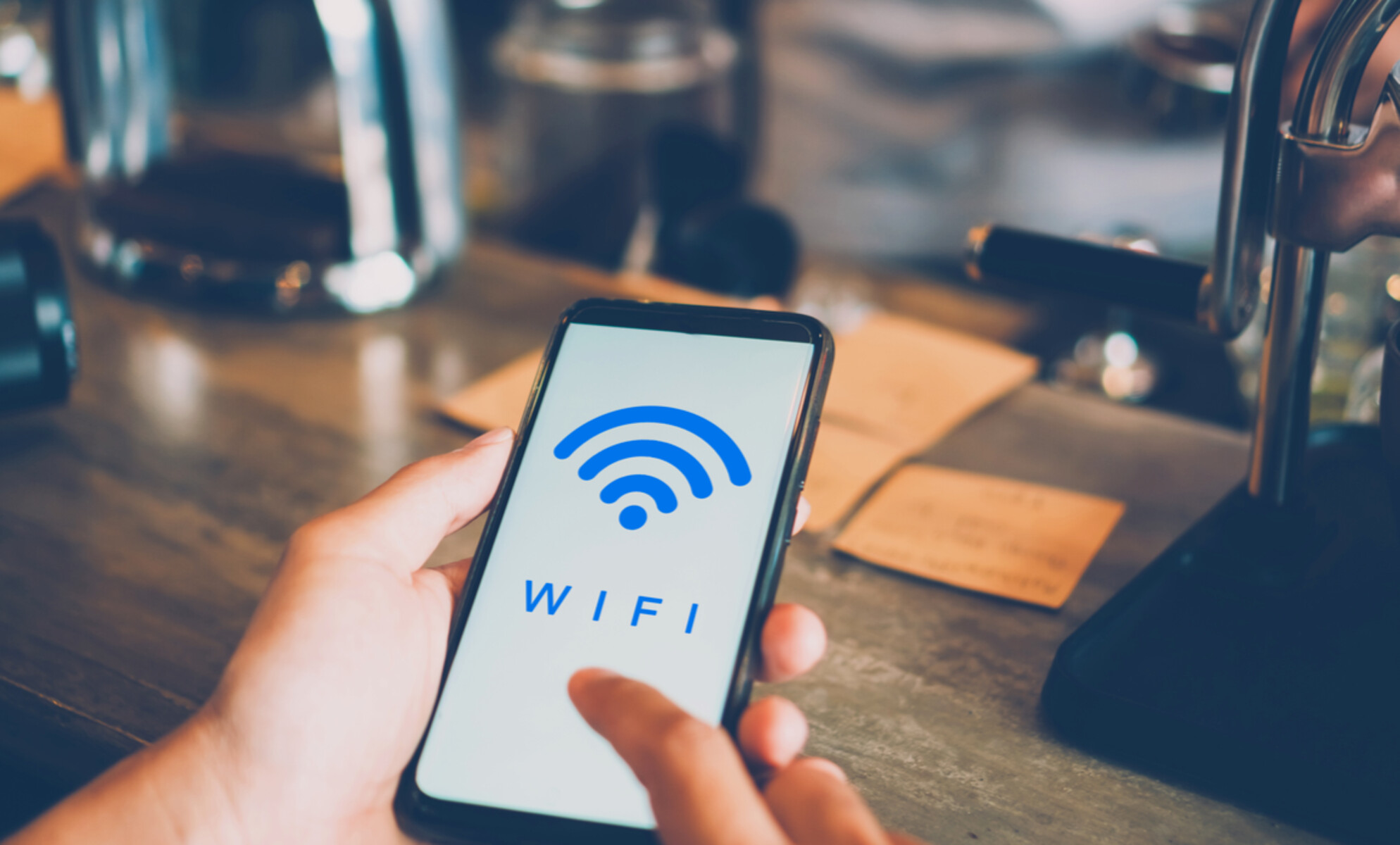Use Wi-Fi Whenever Possible
Using Wi-Fi whenever possible is a practical and effective way to reduce hotspot data usage. Wi-Fi offers a faster and more reliable connection, allowing you to conserve your cellular data for times when Wi-Fi isn't available. Whether you're at home, in the office, or at a public hotspot, connecting to Wi-Fi can significantly alleviate the strain on your mobile data plan. Here are some compelling reasons to prioritize Wi-Fi usage:
-
Cost-Efficiency: Wi-Fi connectivity enables you to maximize your existing internet subscription without incurring additional charges for data usage. By leveraging Wi-Fi networks, you can avoid excessive data consumption and prevent unexpected overage fees on your cellular plan.
-
Faster Data Transfer: Wi-Fi connections typically provide faster data transfer speeds compared to cellular networks. This is advantageous when downloading large files, streaming high-definition content, or engaging in bandwidth-intensive activities, as it ensures a smoother and more seamless experience.
-
Stable Connectivity: Wi-Fi networks offer greater stability and reliability, especially in areas with poor cellular reception. By utilizing Wi-Fi, you can enjoy uninterrupted access to online resources, communication platforms, and entertainment services without experiencing the frustration of dropped connections or fluctuating signal strength.
-
Enhanced Security: Wi-Fi networks often incorporate advanced security protocols, such as WPA3 encryption, to safeguard data transmission and protect against unauthorized access. This can mitigate the risks associated with public Wi-Fi usage, providing a more secure environment for browsing, online transactions, and sensitive communications.
-
Optimized Battery Life: Utilizing Wi-Fi for data-intensive tasks, such as video streaming and large file downloads, can extend the battery life of your mobile device. Since Wi-Fi consumes less power than cellular data, your device's battery will last longer, allowing you to stay connected for extended periods without draining your battery excessively.
By capitalizing on Wi-Fi connectivity whenever it's available, you can effectively manage your hotspot data usage and optimize your overall digital experience. Whether you're conserving data for essential tasks or simply aiming to reduce your reliance on cellular networks, integrating Wi-Fi into your connectivity strategy offers numerous benefits that can positively impact your mobile usage habits.
Disable Automatic App Updates
Disabling automatic app updates on your mobile device can yield substantial benefits in managing and conserving hotspot data usage. By taking control of when and how apps are updated, you can optimize data utilization and minimize unexpected data consumption. Here's a closer look at why disabling automatic app updates is a practical and strategic approach to data management:
Preserving Data Quotas
Automatic app updates, while convenient, can inadvertently deplete your allotted data quota, especially when numerous apps simultaneously download updates in the background. This uncontrolled data usage can lead to unexpected overage charges or throttled speeds, impacting your overall connectivity experience. By disabling automatic updates, you gain the ability to oversee and schedule app updates based on your available data resources, ensuring that updates occur when you're connected to Wi-Fi or during off-peak hours to mitigate data usage concerns.
Customized Update Management
Disabling automatic app updates provides you with the flexibility to tailor the update process according to your preferences and priorities. You can selectively update critical apps while postponing non-essential updates, enabling you to allocate data resources judiciously. This personalized approach empowers you to manage data consumption more effectively, aligning app updates with your data plan limitations and connectivity preferences.
Enhanced Control Over Data Usage
Taking charge of app updates allows you to exert greater control over your data usage patterns. Instead of apps consuming data in the background without your explicit consent, disabling automatic updates empowers you to review update sizes, assess their impact on your data allowance, and make informed decisions regarding when and how updates are performed. This heightened control fosters a more deliberate and conscious approach to data management, reducing the likelihood of exceeding data limits and promoting efficient data utilization.
Mitigating Unnecessary Data Expenditure
Automatic app updates can lead to unnecessary data expenditure, particularly when updates are initiated at inopportune moments or without your awareness. By disabling automatic updates, you mitigate the risk of apps consuming data when it's not conducive to your current connectivity context. This proactive measure minimizes the likelihood of data wastage and ensures that your data resources are allocated purposefully, aligning with your specific usage requirements and preferences.
By embracing the practice of disabling automatic app updates, you can exercise greater oversight of your data consumption, optimize your data utilization, and mitigate the potential for unforeseen data-related challenges. This proactive approach empowers you to align app updates with your connectivity needs, enhancing your ability to manage hotspot data usage effectively and prudently.
Limit Streaming Quality
Limiting streaming quality represents a proactive and effective strategy for mitigating excessive hotspot data consumption while still enjoying multimedia content. When streaming videos, music, or other media, opting for lower quality settings can significantly reduce the amount of data utilized without compromising the overall viewing or listening experience.
By adjusting streaming quality settings on popular platforms such as YouTube, Netflix, Spotify, and other streaming services, users can exert greater control over their data usage. This deliberate adjustment allows individuals to strike a balance between data conservation and satisfactory media consumption. Here's a closer look at the rationale and benefits of limiting streaming quality:
Bandwidth Conservation
Limiting streaming quality conserves bandwidth by reducing the amount of data transmitted during media playback. Lower quality settings entail decreased resolution and bitrate, resulting in reduced data consumption per unit of time. This prudent approach ensures that users can enjoy their favorite content while minimizing the strain on their data allowance.
Customized Viewing Experience
Adjusting streaming quality empowers users to tailor their viewing experience based on their current connectivity and data constraints. By choosing lower quality settings, individuals can adapt their media consumption to align with available data resources, ensuring uninterrupted access to entertainment without compromising their data limits.
Data Utilization Optimization
Opting for lower streaming quality optimizes data utilization, allowing users to make the most of their available data without unnecessary extravagance. This mindful approach promotes efficient data usage, enabling individuals to enjoy streaming content while maintaining control over their data consumption.
Seamless Connectivity Management
Limiting streaming quality facilitates seamless management of connectivity resources, especially when relying on a mobile hotspot. By choosing lower quality settings, users can prevent excessive data depletion, ensuring consistent access to streaming services without risking data overage or throttling.
Enhanced Data Control
Adjusting streaming quality provides users with enhanced control over their data usage patterns. This proactive measure allows individuals to make informed decisions regarding the quality of media they consume, aligning their preferences with their data plan limitations and connectivity circumstances.
By embracing the practice of limiting streaming quality, individuals can strike a harmonious balance between enjoying multimedia content and managing their hotspot data usage effectively. This approach empowers users to exercise greater control over their data consumption, promoting a more deliberate and conscious approach to media streaming while optimizing data utilization.
Turn Off Background App Refresh
Turning off background app refresh is a strategic and practical approach to curbing unnecessary data usage and optimizing the performance of your mobile device. By disabling this feature, you can exert greater control over data consumption, conserve battery life, and enhance the overall efficiency of your device. Here's an in-depth exploration of the benefits and rationale behind turning off background app refresh:
Data Conservation
Background app refresh involves apps periodically fetching new content or updates in the background, even when they are not actively in use. This continuous data retrieval can contribute to significant data consumption over time, particularly for apps that frequently refresh their content. By turning off background app refresh, you can mitigate this uncontrolled data usage, ensuring that apps only retrieve new data when actively opened, thereby optimizing your data utilization and preventing unnecessary data expenditure.
Battery Life Optimization
In addition to data conservation, disabling background app refresh can contribute to improved battery life on your mobile device. When apps constantly refresh in the background, they consume additional system resources and power, potentially leading to accelerated battery depletion. By deactivating this feature, you can extend the battery life of your device, allowing it to operate more efficiently and sustain prolonged usage without excessive power drainage.
Controlled Data Usage
Turning off background app refresh empowers you to exercise greater control over your data usage patterns. Instead of allowing apps to autonomously refresh in the background, this proactive measure enables you to manage data retrieval based on your specific needs and connectivity context. By controlling when apps fetch new content, you can align data usage with your available resources, ensuring that data consumption is deliberate and purposeful.
Enhanced Performance
Disabling background app refresh can contribute to the overall performance optimization of your device. By reducing the background processes and data fetching activities of apps, you can enhance the responsiveness and efficiency of your device, leading to smoother multitasking, improved system stability, and a more seamless user experience.
Prudent Data Management
By turning off background app refresh, you engage in prudent data management, aligning app activities with your data plan limitations and connectivity preferences. This proactive approach ensures that data is utilized judiciously, preventing unnecessary background data consumption and promoting a more mindful and deliberate approach to data management.
In essence, turning off background app refresh offers a myriad of advantages, including efficient data utilization, extended battery life, enhanced device performance, and controlled data management. By implementing this strategy, you can optimize your mobile experience while mitigating the potential for excessive data usage and battery drain.
Use Data Monitoring Apps
In today's interconnected world, where digital activities form an integral part of daily life, the prudent management of data usage has become increasingly crucial. In this context, the utilization of data monitoring apps emerges as a valuable and practical strategy for individuals seeking to gain comprehensive insights into their data consumption patterns and exercise greater control over their connectivity expenditures.
Data monitoring apps serve as indispensable tools for tracking, analyzing, and managing data usage across various applications and services. These applications offer a wealth of features designed to empower users with real-time visibility into their data utilization, enabling them to make informed decisions and implement proactive measures to optimize their connectivity experience. By leveraging data monitoring apps, individuals can harness the following benefits:
Comprehensive Data Analysis
Data monitoring apps provide detailed breakdowns of data usage, categorizing consumption by specific apps, services, or activities. This granular analysis offers invaluable insights into the primary drivers of data consumption, allowing users to identify data-intensive applications or behaviors that may warrant optimization or modification.
Usage Alerts and Notifications
Many data monitoring apps offer customizable usage alerts and notifications, empowering users to set predefined thresholds for data consumption. Upon reaching or nearing these thresholds, users receive timely alerts, enabling them to take preemptive actions to manage their data usage effectively and avoid exceeding their allocated data limits.
Historical Usage Trends
By capturing historical data usage trends, these apps offer users a longitudinal view of their connectivity habits. This historical perspective facilitates the identification of usage patterns, peak consumption periods, and potential areas for data conservation, empowering individuals to make data-conscious decisions and adapt their usage behaviors accordingly.
Data Saving Recommendations
Some data monitoring apps provide personalized recommendations and tips for optimizing data usage based on individual consumption patterns. These insights may encompass suggestions for app-specific settings adjustments, content download strategies, or the identification of data-efficient alternatives, fostering a more efficient and mindful approach to data management.
Wi-Fi Usage Tracking
In addition to cellular data monitoring, many data monitoring apps also track Wi-Fi usage, offering a comprehensive overview of total data consumption across different network types. This feature enables users to assess their overall data utilization, differentiate between cellular and Wi-Fi-driven activities, and strategize their connectivity preferences accordingly.
By harnessing the capabilities of data monitoring apps, individuals can gain a deeper understanding of their data consumption behaviors, implement targeted optimizations, and exercise greater control over their connectivity expenditures. These apps serve as indispensable allies in the quest for efficient data management, empowering users to align their usage patterns with their data plan limitations and connectivity preferences effectively.
Utilize Data Saving Mode
Utilizing data saving mode on your mobile device represents a proactive and strategic approach to optimizing data usage, conserving cellular resources, and extending the longevity of your data plan. Data saving mode, often integrated into the settings of modern smartphones, empowers users to exert greater control over their data consumption, ensuring that connectivity activities are conducted in a more efficient and conservative manner.
By activating data saving mode, users can capitalize on a range of features and functionalities designed to minimize data usage without compromising essential connectivity. These features may include:
-
Background Data Restriction: Data saving mode often includes the option to restrict background data usage for applications. This means that apps will be prevented from consuming data in the background, thereby reducing unnecessary data usage when the device is not actively in use. By restricting background data, users can prevent data-intensive apps from depleting their data allowance without their explicit consent.
-
Data Compression: Some data saving modes incorporate data compression techniques, which optimize the transmission of data by reducing file sizes and minimizing data overhead. This compression mechanism enables users to achieve greater efficiency in data transfer, allowing them to make the most of their available data while engaging in various online activities, such as browsing, messaging, and media consumption.
-
Image and Video Compression: In addition to overall data compression, data saving mode may include specific optimizations for images and videos. By compressing media content during transmission, users can experience reduced data consumption when viewing multimedia content, such as images and videos, without compromising the visual quality to a significant extent.
-
App Data Usage Restrictions: Data saving mode often offers the ability to impose restrictions on individual apps, limiting their data usage to prevent excessive consumption. This granular control enables users to prioritize essential applications while curbing the data appetite of less critical or data-intensive apps, ensuring that data resources are allocated judiciously.
-
Automatic Data Management: Some data saving modes feature automated data management capabilities, allowing the device to intelligently regulate data usage based on predefined parameters and usage patterns. This automation streamlines the process of data optimization, ensuring that users can benefit from efficient data management without requiring constant manual intervention.
By leveraging the capabilities of data saving mode, users can optimize their data utilization, mitigate the risk of exceeding data limits, and foster a more deliberate and conscious approach to connectivity. This proactive strategy empowers individuals to align their data consumption with their specific requirements and preferences, ensuring that data resources are utilized efficiently and purposefully.
In essence, the utilization of data saving mode serves as a cornerstone of effective data management, enabling users to maximize the value of their data plans while maintaining control over their connectivity experiences. By embracing this feature, individuals can navigate the digital landscape with confidence, knowing that their data usage is optimized and their connectivity resources are managed prudently.
Download Content for Offline Use
Downloading content for offline use is a savvy and practical approach to reducing reliance on real-time data streaming while ensuring uninterrupted access to essential media and resources. This proactive strategy empowers users to pre-download a diverse array of content, including music, videos, documents, and maps, onto their devices for offline consumption. By embracing this approach, individuals can overcome connectivity constraints, conserve data, and enjoy seamless access to their favorite content regardless of their current connectivity status.
Benefits of Offline Content Access
-
Data Conservation: Downloading content for offline use minimizes the need for continuous data streaming, effectively reducing data consumption and mitigating the risk of exceeding data limits. By proactively downloading content, users can circumvent the need for real-time data access, conserving their cellular resources for essential tasks and unexpected connectivity scenarios.
-
Uninterrupted Access: Offline content access ensures uninterrupted availability of media and resources, even in environments with limited or unreliable connectivity. Whether traveling through areas with poor network coverage or encountering temporary connectivity disruptions, users can rely on their pre-downloaded content to sustain their entertainment, productivity, and information needs.
-
Enhanced Efficiency: Accessing content offline promotes efficiency by eliminating the latency and potential interruptions associated with real-time data streaming. Users can seamlessly engage with their downloaded content, benefiting from instant access and smooth playback without being subject to fluctuations in network performance or data availability.
-
Optimized Data Utilization: By pre-downloading content for offline use, individuals can optimize their data utilization, ensuring that their available data is allocated purposefully and sparingly. This strategic approach empowers users to prioritize essential content for offline access, minimizing the strain on their data allowance and promoting efficient data management.
Practical Applications
-
Music and Video Streaming: Many music and video streaming platforms offer offline playback options, allowing users to download their favorite songs, albums, and videos for offline enjoyment. This feature is particularly beneficial for individuals seeking to conserve data while immersing themselves in their preferred audiovisual content.
-
Document and Resource Access: Offline access to documents, articles, and reference materials is invaluable for professionals, students, and avid readers. By downloading relevant documents and resources onto their devices, users can maintain access to critical information without relying on continuous internet connectivity.
-
Offline Maps and Navigation: Offline maps and navigation applications enable users to download maps for specific regions or routes, ensuring that they can navigate seamlessly without continuous reliance on data connectivity. This feature is especially advantageous for travelers and outdoor enthusiasts exploring areas with limited network coverage.
By leveraging the capability to download content for offline use, individuals can enhance their digital experiences, minimize their dependence on real-time data streaming, and exercise greater control over their connectivity. This proactive strategy empowers users to curate their offline content library, ensuring that essential media and resources are readily accessible regardless of their current connectivity status.
Avoid Unnecessary Data Usage
In the quest to optimize hotspot data usage, avoiding unnecessary data consumption emerges as a pivotal strategy for individuals seeking to manage their connectivity resources prudently. By adopting a mindful and discerning approach to data usage, users can mitigate the risk of exceeding data limits, minimize unexpected data expenditures, and ensure that their cellular resources are allocated purposefully. Here's a comprehensive exploration of the practical measures and considerations associated with avoiding unnecessary data usage:
App Notification Management
Proactively managing app notifications represents a fundamental aspect of curbing unnecessary data usage. By scrutinizing and customizing notification settings for individual apps, users can prevent non-essential data transmissions triggered by frequent or superfluous notifications. This strategic adjustment not only conserves data but also fosters a less intrusive and more focused digital experience.
Background Data Restrictions
Imposing restrictions on background data usage for applications is instrumental in preventing unnecessary data consumption. By selectively limiting the data access privileges of apps when running in the background, users can curtail uncontrolled data transfers, ensuring that data is only utilized when apps are actively in use. This measure promotes efficient data management and minimizes the likelihood of data wastage.
Smart Content Streaming
Engaging in smart content streaming practices, such as pre-buffering videos or adjusting streaming resolutions based on available data resources, can significantly reduce unnecessary data usage. By exercising greater control over content streaming behaviors and preferences, users can optimize their data utilization without sacrificing their viewing or listening experiences.
App Permissions Review
Regularly reviewing and managing app permissions is essential for avoiding unnecessary data usage. By scrutinizing the data access permissions granted to various apps, users can prevent indiscriminate data collection and transmission, safeguarding their privacy and mitigating excessive data usage stemming from unauthorized or unmonitored app activities.
Data-Efficient Browsing Habits
Cultivating data-efficient browsing habits, such as utilizing ad blockers, enabling data-saving modes in browsers, and favoring lightweight or mobile-optimized websites, contributes to minimizing unnecessary data consumption. These proactive measures empower users to navigate the digital landscape with heightened data consciousness, ensuring that their browsing activities align with their data management objectives.
By embracing these practical strategies and considerations, individuals can proactively mitigate unnecessary data usage, optimize their data utilization, and foster a more deliberate and mindful approach to connectivity. These measures empower users to exercise greater control over their data consumption patterns, ensuring that their cellular resources are utilized efficiently and purposefully.







